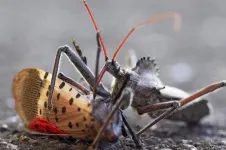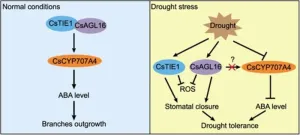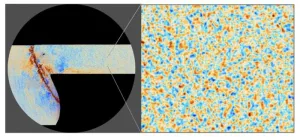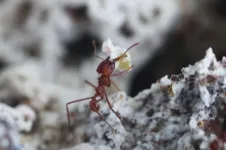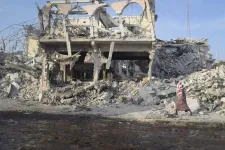(Press-News.org) UNIVERSITY PARK, Pa. — Moving from fossil fuels to renewable energy sources like wind and solar will require better ways to store energy for use when the sun is not shining or the wind is not blowing. A new study by researchers at Penn State found that taking advantage of natural geothermal heat in depleted oil and gas wells can improve the efficiency of one proposed energy storage solution: compressed-air energy storage (CAES).
The researchers recently published their findings in the Journal of Energy Storage.
CAES plants compress air and store it underground when energy demand is low and then extract the air to create electricity when demand is high. But startup costs currently limit commercial development of these projects, the scientists said.
The researchers proposed a new geothermal-assisted compressed-air energy storage system that makes use of depleted oil and gas wells — the Environmental Protection Agency estimates there are around 3.9 million in the United States — and found it can improve efficiency by 9.5% over the existing technology. This means a larger percentage of the energy stored in the system can be recovered and turned into electricity, potentially boosting profits for operators.
“This improvement in efficiency can be a game changer to justify the economics of compressed-air energy storage projects,” said Arash Dahi Taleghani, professor of petroleum and natural gas engineering at Penn State and corresponding author on the study. “And on top of that, we could significantly avoid the upfront cost by using existing oil and gas wells that are no longer in production. This could be a win, win situation.”
Reusing depleted oil and gas wells would allow operators to access geothermal heat in hot rock formations underground, eliminating upfront costs of drilling new wells and potentially making the technology more appealing to industry, the scientists said.
Gases like compressed air increase in pressure as temperatures increase, meaning the heated wells could potentially store more energy, according to Taleghani. When electricity is needed, the heated, compressed air is released, driving a turbine to produce power.
“Without taking advantage of the geothermal setup, you could not get enough encouraging numbers,” Taleghani said, explaining that the team used numerical modeling simulations to find that placing CAES systems in abandoned oil and gas wells significantly increased the air temperature in the systems. “And on top of that, drilling new wells may not justify the economics of this type of storage. But by combining these two factors, and by going back and forth through modeling and simulation, we found this could be a very good solution.”
Energy storage options like CAES are particularly important in the transition to clean energy, according to the researchers, because they help address the intermittent nature of renewable sources. By storing excess renewable energy and releasing it when needed, energy storage contributes to grid stability and reliability.
“The problem is that sometimes when we need energy, there is no sunshine or there is no wind,” Taleghani said. “That’s a big barrier against further expansion of most of the renewable energy that is available to us. That’s why it's very important to have some storage capacity to support the grid.”
Repurposing depleted oil and gas wells may also help mitigate potential environmental impacts of abandoned wells and potentially provide new job opportunities in areas with rich energy industry traditions, the researchers said.
In Pennsylvania alone, regulators estimate there are hundreds of thousands of orphaned and abandoned wells. If these wells are improperly plugged, or damaged, they can leak methane into the atmosphere and groundwater.
“If we use existing wells, we are basically hitting two birds with one stone,” Taleghani said. “First, we are sealing these wells. That stops any potential leaks. And then if we are repurposing these wells for energy storage, we are still using the infrastructure that is in place in these communities. It can potentially maintain employment in the area and allow communities to be part of the energy future.”
This research was conducted as part of the Repurposing Center for Energy Transition (ReCET) at Penn State. The center seeks to repurpose fossil energy infrastructure for energy transition applications, especially in legacy energy communities.
Also contributing from Penn State were Derek Elsworth, G. Albert Shoemaker Chair in Mineral Engineering and professor of energy and geo-environmental engineering, and Qitao Zhang, a postdoctoral scholar, both in the John and Willie Leone Family Department of Energy and Mineral Engineering.
The U.S. Department of Energy supported this research.
END
Reusing old oil and gas wells may offer green energy storage solution
2025-03-18
ELSE PRESS RELEASES FROM THIS DATE:
Natural insect predators may serve as allies in spotted lanternfly battle
2025-03-18
UNIVERSITY PARK, Pa. — Insect predators found in the United States could help keep spotted lanternfly populations in check while potentially reducing reliance on chemical control methods, according to a new study conducted by researchers at Penn State.
Led by entomologists in Penn State’s College of Agricultural Sciences and published in Arthropod-Plant Interactions, the study evaluated the effectiveness of various insects in potentially controlling spotted lanternfly populations. The invasive pest, first detected in the United States in 2014, has spread across at least 18 states, causing significant damage to vineyards, orchards ...
Rice research team creates universal RNA barcoding system for tracking gene transfer in bacteria
2025-03-18
In the microscopic world of bacteria, gene transfer is a powerful mechanism that can alter cellular function, drive antibiotic resistance and even shape entire ecosystems. Now an interdisciplinary group of researchers at Rice University has developed an innovative RNA “barcoding” method to track these genetic exchanges in microbial communities, providing new insights into how genes move across species. The findings were recently published in Nature Biotechnology.
“We’ve long known that bacteria swap genes in ways that impact human health, biotechnology and environmental stability,” said James Chappell, associate professor of biosciences ...
New genetic pathway unlocks drought-resistant cucumbers with fewer branches
2025-03-18
A new discovery has unveiled a genetic module, CsTIE1-CsAGL16, that simultaneously regulates lateral branch development and drought tolerance in cucumbers. This dual-function genetic pathway offers a promising new approach to breeding cucumber varieties that are both resilient to water scarcity and tailored to market preferences. By deciphering how these genes coordinate water conservation and branch growth, researchers have opened new doors for improving crop adaptability and productivity in the face of climate change.
Drought stress poses a major challenge to ...
New high-definition pictures of the baby universe
2025-03-18
New research by the Atacama Cosmology Telescope (ACT) collaboration has produced the clearest images yet of the universe’s infancy – the earliest cosmic time yet accessible to humans. Measuring light that traveled for more than 13 billion years to reach a telescope high in the Chilean Andes, the new images reveal the universe when it was about 380,000 years old – the equivalent of hours-old baby pictures of a now middle-aged cosmos.
“We are seeing the first steps towards making the earliest stars and galaxies,” says Suzanne Staggs, director of ACT and Henry ...
Zhou conducting GPU modeling research
2025-03-18
Keren Zhou, Assistant Professor, Computer Science, College of Engineering and Computing (CEC), received funding for: “GPU Modeling Research of Smart Modeling and Simulation for HPC (SMASH).”
Zhou and his collaborators will complete research and development tasks.
Zhou received $65,648 from Brookhaven National Laboratory on a subaward from the U.S. Department of Energy for this research. Funding began in Feb. 2025 and will end in late Sept. 2025.
...
Twenty-two year study: Adolescents engaged in fewer external risky behaviors but some report increasing mental health concerns
2025-03-18
Between 1999-2021, U.S. adolescents steadily desisted from risky behaviors such as substance use and violence, and from reporting a combination of both risky behaviors and mental health symptoms. Yet a comparatively small but growing proportion of youth demonstrated elevated symptoms of depression, according to a report to be published in the April 2025 issue of Pediatrics.
The study, published online on March 18, and titled “Trends in Mental and Behavioral Health Risks in Adolescents: 1999-2021,” analyzed data from the national biennial Youth Risk Behavior Surveys distributed by the Centers for Disease Control and Prevention.
A ...
Leafcutter ants recognize and fight pathogen even 30 days after initial contamination, study shows
2025-03-18
A study conducted by researchers from São Paulo State University (UNESP), in Brazil, and collaborators shows that lemon leafcutter ants (Atta sexdens) exhibit behaviors that go beyond so-called social immunity, i.e. the ability to detect pathogens and try to get rid of them for the benefit of the colony.
In an article published in the journal Proceedings of the Royal Society B, scientists report that these insects are able to recognize a pathogenic fungus they have already been exposed ...
Terrorists time their attacks during periods of security or financial crisis
2025-03-18
BINGHAMTON, N.Y. -- Terrorists time their attacks during periods of security or financial crisis, according to new research from political scientists at Binghamton University, State University of New York.
To a bystander, a terrorist attack may seem an indiscriminate act of violence, timed solely to inflict maximum damage on its victims.
But the timing of such attacks is strategic, involving a series of tradeoffs to strike vulnerable targets while preserving the group’s reputation, according to research by Binghamton University Professor of Political Science Seden ...
Kansas, Missouri farmers avoid discussing climate change regardless of opinions, study finds
2025-03-18
LAWRENCE — We have all avoided having conversations if the topic is controversial or may lead to an argument. Farmers, who are on the front lines of climate change, avoid talking about it with their neighbors, community members, elected officials and even their own families because of potential conflict and harm to their livelihood, new research from the University of Kansas has found.
Researchers conducted interviews with more than 20 farmers in Kansas and Missouri to understand their communication about climate change. Results showed respondents had a range of views on climate ...
AI food scanner turns phone photos into nutritional analysis
2025-03-18
Snap a photo of your meal, and artificial intelligence instantly tells you its calorie count, fat content, and nutritional value — no more food diaries or guesswork.
This futuristic scenario is now much closer to reality, thanks to an AI system developed by NYU Tandon School of Engineering researchers that promises a new tool for the millions of people who want to manage their weight, diabetes and other diet-related health conditions.
The technology, detailed in a paper presented at the 6th ...
